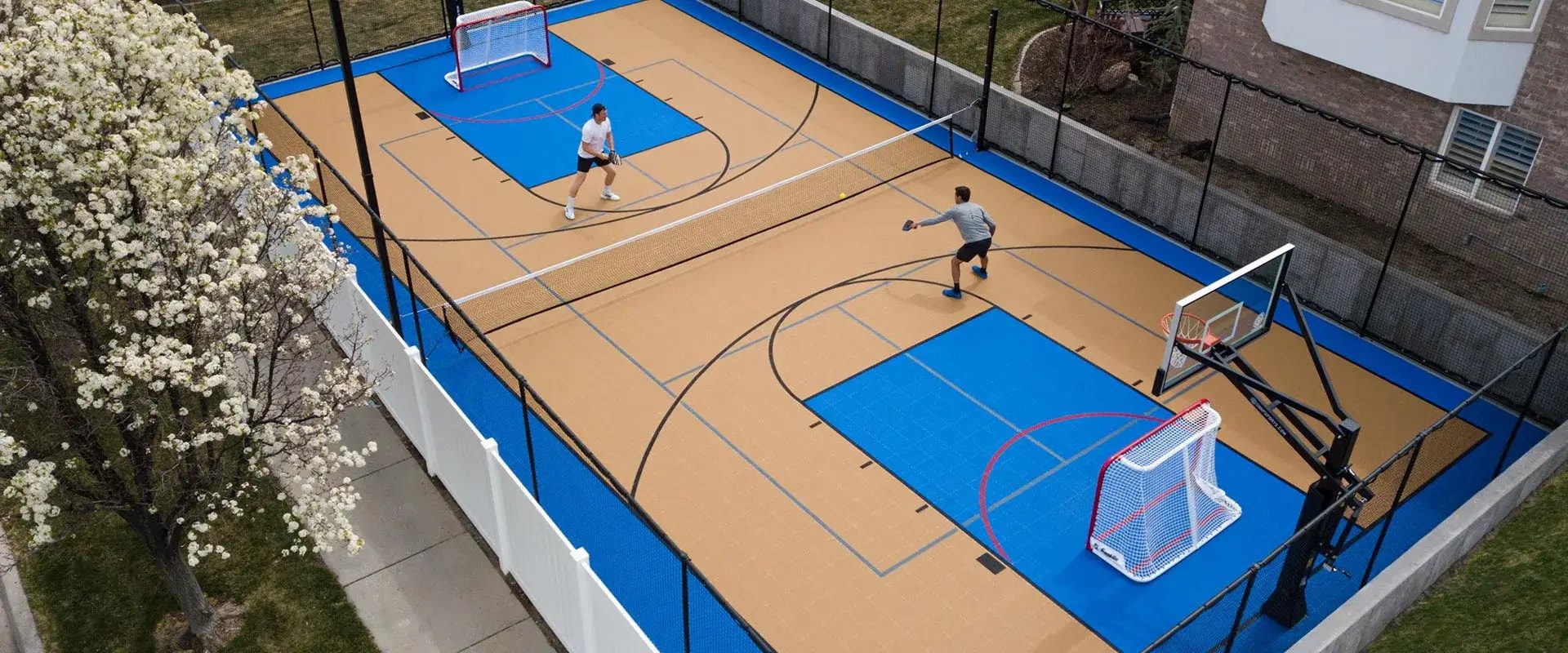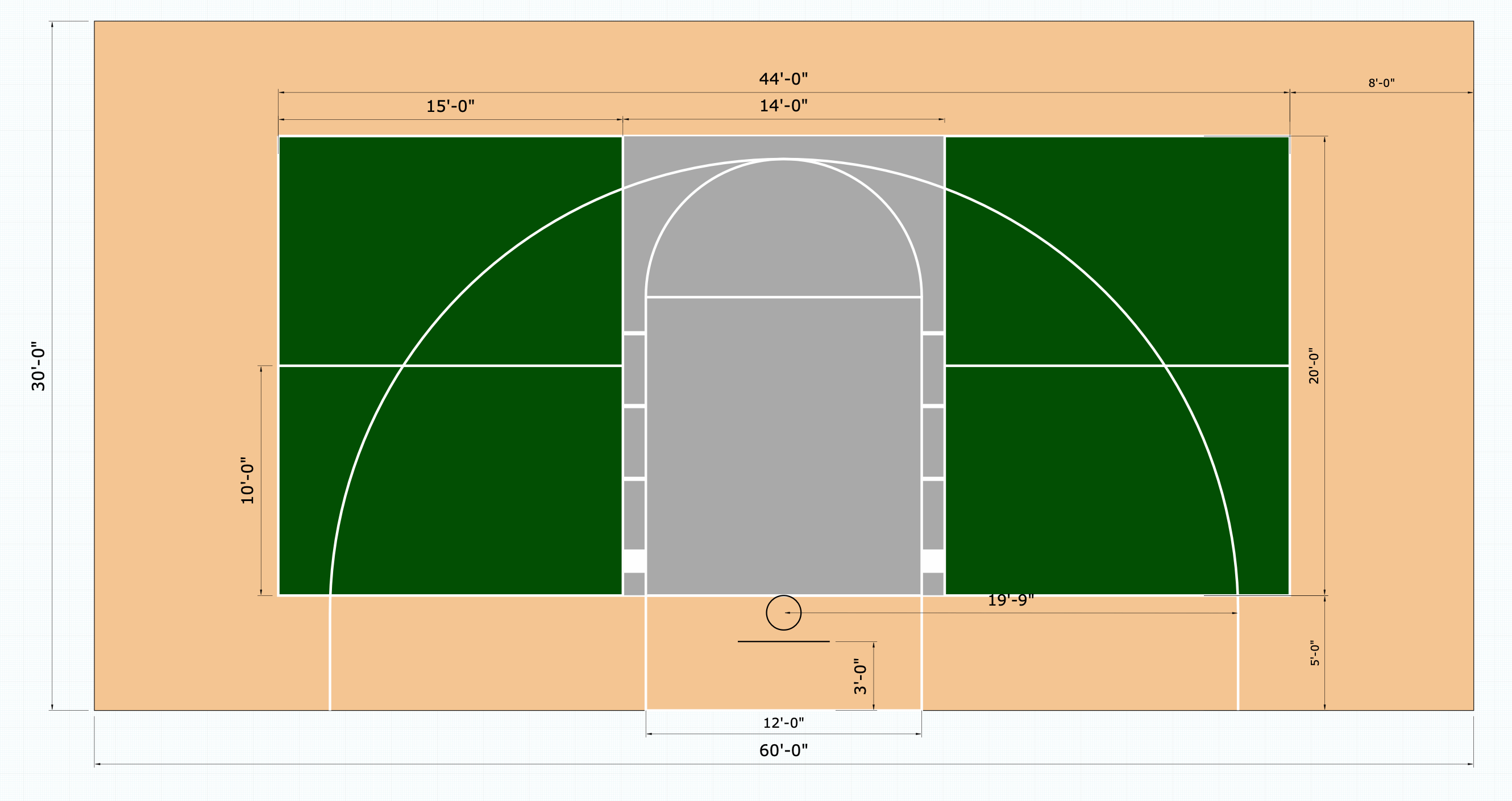Comprehensive Guide to Pickleball Courts Layout & Construction in Illinois and Midwest
Comprehensive Guide to Pickleball Courts Layout & Construction in Illinois and Midwest
Blog Article
Trick Variables in the Building And Construction of Pickleball Judiciaries: From Website Choice to Final Coatings
The construction of pickleball courts includes a variety of crucial aspects, starting with the option of an ideal website that balances access with ecological considerations. Important elements such as court measurements, surface products, and drainage systems dramatically impact not just the quality of play but likewise the long life of the facility. Furthermore, attention to lighting and finishing touches can raise the overall experience for gamers and spectators alike. Understanding just how each of these parts interrelates might expose insights that are frequently forgotten, motivating a more detailed exam of best techniques in court construction.
Website Selection Requirements
When starting the building and construction of pickleball courts, it is essential to pin down the website selection criteria that will certainly make sure ideal playability and ease of access. The location must be easily reachable for players, preferably situated near suburbs or area centers, to urge involvement.
Moreover, the terrain needs to be degree and steady, as irregular ground can lead to security dangers and impact gameplay. Sufficient drain is additionally critical; picking a website with great water overflow will certainly aid keep court conditions throughout damaging climate.
One more crucial factor to consider is the availability of energies. Accessibility to electricity and water is necessary for lighting and maintenance functions. Furthermore, closeness to vehicle parking facilities is essential, helping with easy accessibility for players and viewers alike.
Environmental elements can not be ignored; all-natural color from trees can enhance player comfort, while direct exposure to prevailing winds might disrupt play. Finally, zoning regulations and neighborhood assistance should be thought about to ensure that the task straightens with local standards and gets the backing it needs for effective execution. By meticulously reviewing these standards, stakeholders can create a welcoming and practical atmosphere for pickleball enthusiasts.
Court Capacities and Format
To ensure optimum gameplay and adherence to policies, the measurements and layout of pickleball courts must be carefully specified. A conventional pickleball court measures 20 feet in width and 44 feet in size for both songs and doubles play.
The net height is evaluated 36 inches at the sidelines and 34 inches at the facility, developing a small dip that affects sphere trajectory. Court markings are similarly vital; lines ought to be 2 inches broad and unique in shade to make sure visibility.
Furthermore, a barrier zone bordering the court is advisable, typically extending 5 to 10 feet past the sidelines and standards to fit gamers' activities and enhance security. Correct layout and measurements not only make certain compliance with main policies but also improve the total having fun experience, fitting both leisure and competitive play. Mindful preparation in these areas is extremely important to the successful building and construction of pickleball courts.
Surface Area Material Options
Choosing the best surface area material for pickleball courts is essential for guaranteeing optimal player performance and security. The choice of surface area can significantly impact gameplay, including sphere bounce, traction, and gamer comfort.
There are numerous alternatives offered, each with its distinct characteristics. Asphalt is a prominent choice as a result of its durability and reduced maintenance requirements. It provides a solid having fun surface that can withstand numerous climate condition but may need routine resurfacing.
Concrete is one more commonly utilized material, supplying exceptional durability and a smooth surface. It permits Read Full Article for regular ball bounce however can be difficult on players' joints, making it less desirable for lasting play without proper padding.
For those looking for enhanced comfort and shock absorption, cushioned acrylic surface areas offer a sensible option. These surfaces integrate a base layer with an acrylic overcoat, giving boosted grip and a softer feel, which is valuable for lowering the danger of injuries.
Last but not least, synthetic lawn is getting grip, specifically for multi-purpose facilities. Its convenience and lower upkeep requires make it an appealing choice, though it may not supply the very same sphere response as conventional hard courts. Mindful consideration of these options will certainly make sure an ideal having fun environment.
Drainage and Illumination Factors To Consider
Correct water drainage and effective lights are necessary elements in the building and construction of pickleball courts, significantly affecting both playability and safety and security. Adequate drain systems protect against water build-up, which can cause slippery surface areas and damages to the court structure. A properly designed drainage plan incorporates sloped surfaces and suitable products to promote water move far from the playing location - Illinois and midwest. This not only maintains the integrity of the court but also reduces downtime as a result of poor weather conditions.
Illumination is similarly vital, specifically for courts meant for night usage. Appropriate illumination boosts presence, guaranteeing that players can see the sphere clearly and lowering the risk of accidents. The placement of illumination components must be strategically planned to eliminate shadows and give even circulation of light across the court. LED lights are advised for their energy effectiveness and longevity, providing brilliant lighting while decreasing functional prices.

Final Coatings and Maintenance
After addressing water drainage and lighting factors to directory consider, attention turns to the final surfaces and continuous maintenance of pickleball courts. Usual alternatives consist of acrylic coverings and specialized sports surface areas that provide optimum traction and padding.

Seasonal maintenance may consist of resurfacing every couple anchor of years, depending upon usage and environmental variables. Correctly keeping webs, court lines, and surrounding locations is equally important to supply a risk-free and enjoyable playing experience. By investing in top quality surfaces and adhering to a structured maintenance timetable, center owners can guarantee their pickleball courts stay in outstanding condition for several years ahead.
Verdict
In conclusion, the successful construction of pickleball courts pivots on precise attention to numerous crucial elements. Quality coatings and a robust maintenance routine are necessary for preserving the court's problem, boosting the overall experience for players and spectators alike.
Report this page